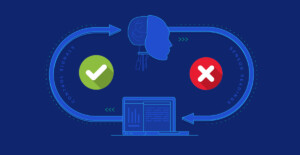What Is ADA Compliance?
Does your business have a website? Then you need to be aware of this important regulatory standard and what it means for your business. This article recaps what we covered in our recent ADA compliance webinar.
Business owners in New York and Florida have witnessed an alarming trend. Over the past couple of years, the number of Americans with Disabilities Act (ADA) website accessibility lawsuits have skyrocketed. The reality is, if your organization is not ADA compliant yet, then it’s only a matter of time until your business gets hit with such a lawsuit.
Apart from avoiding lawsuits, ADA compliance also offers a compelling business case as it opens up an untapped market. But before we dive in, let’s first take a brief look at digital accessibility for people living with disabilities.
A Brief Introduction to Digital Access
These days, it’s virtually impossible to imagine life without the internet. And yet, most of us are not aware of the extreme challenges people with disabilities face when using the technology we take for granted. Despite all the available tools, businesses just aren’t doing enough to make their digital offerings accessible to people with disabilities. This partly stems from a lack of information on disability and digital accessibility.
There are four main classes of disabilities:
- Visual: Color blindness, low vision, blindness.
- Auditory: Deafness, hard-of-hearing
- Mobility: Paralysis, amputation, arthritis, repetitive.
- Cognitive: Memory impairment, autism, ADHD, etc.
What Are the Assistive Technologies for People With Disabilities?
The traditional keyboard, mouse, screen set up doesn’t really suit everyone, including people without any disability. The following assistive technologies help users with disabilities navigate, operate, and interact with digital offerings:
- Speech-to-Text Technology: This refers to voice-prompted software that allows users with a mobility impairment, learning disability, or even limited keyboarding skills to consume digitized communication by dictating or listening to audio output.
- Screen Readers: These are software programs that enable visually impaired users to consume text on a screen by transcribing it into audio output with a speech synthesizer.
- Screen Magnifiers: These software programs interface with a computer’s graphical output to present enlarged screen content for users with some functional vision.
What Are the Web Content Accessibility Guidelines?
Created in 1999, the Web Content Accessibility Guidelines (WCAG) are a set of rules that all business websites and apps must conform to in order to be ADA compliant. These guidelines address the accessibility of web content on desktops and mobile devices like laptops, tablets, and so on. Adhering to WCAG makes your website more accessible to ALL users and makes it more SEO friendly.
On the other hand, ADA non-compliance poses a frightening host of repercussions, such as:
- Paying the opposing party’s attorney fees.
- Paying award to plaintiff.
- Likely, you’ll be mandated by the courts to conform to significantly higher accessibility standards.
- For smaller businesses, the average settlement has been between $10,000 and $25,000.
- If you fail to achieve compliance on time after paying the settlement, you’ll likely be sued again.
What Are the Some Accessible Web Design Examples?
- Images: Every image that carries some information for the user needs to have an alternative text that describes what is visually depicted.
- Keyboard Access: All functionality that is possible with a mouse should also be possible with a keyboard to cater to users with visual and mobility impairments
- Labels for Input Fields: Input fields must have labels embedded in the underlying code, not just appearing visually.
Are there Any Proactive Steps You Can Take?
You could leverage free automated tools like the WAVE Web Accessibility Tool, although they lack accuracy. However, we recommend asking your website if they have a CPACC certified technician available. Also, you need to train your staff on how to handle inquiries from persons with a disability properly.
What If You Get Served with a Lawsuit?
- Contact an experienced attorney.
- Develop a remediation plan.
- Implement remediation as soon as possible.
- Conduct proper staff training.
- Regularly test your website to keep up with all the changes.
Looking for Reliable ADA Compliance Support?
Our experienced IT professionals at tech42 are eager to help your business achieve ADA compliance.
Contact us now to get started!







